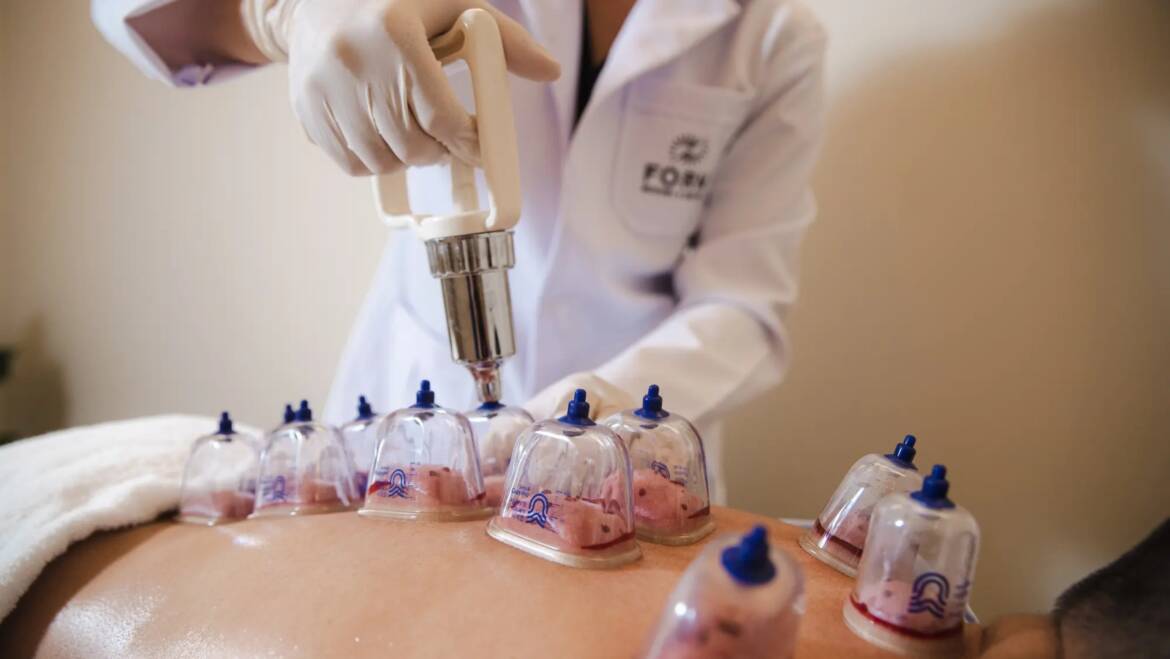Cupping therapy, or Hijama, is often seen as a traditional healing practice rooted in Islamic and Middle Eastern culture. But did you know that this natural therapy has travelled across continents, shaping the health traditions of many civilizations?
From the deserts of Arabia to the temples of China and even the modern spas of Europe, Hijama (Wet Cupping Therapy) has made a lasting impact on the world of holistic healing.
Have you ever wondered why a treatment practiced thousands of years ago is still alive and thriving today?
The answer lies in its simplicity, effectiveness, and ability to connect with the body’s natural healing power.
Ancient Roots in the East
Let us begin the journey where cupping therapy first took form – in China.
As early as 3000 years ago, traditional Chinese medicine used cupping to balance the flow of Qi (life energy). Practitioners believed that stagnation in the body caused illness, and by applying suction with cups, they could restore energy flow, reduce pain, and promote healing.
Even today, cupping remains a common practice in Chinese medicine clinics, especially for treating respiratory issues, body pain, and fatigue.
Isn’t it fascinating how a method developed centuries ago still finds relevance in modern times? It shows us that natural healing often holds timeless wisdom.
The Islamic Golden Touch
In the Arab world and Islamic tradition, Hijama is considered more than just therapy, it is a practice encouraged by Prophet Muhammad. Muslims around the globe view it as both a spiritual and physical healing process. The practice is widely used to detoxify the blood, reduce stress, and strengthen immunity.
When you think about it, Hijama is not just about curing pain, it is about restoring balance between the body and soul. That is what makes it so special for millions of people across cultures.
Egyptian Secrets of the Pharaohs
Travel back to ancient Egypt, and you will find cupping therapy etched into history. Records show that Egyptians used cupping to treat fever, pain, and even menstrual imbalances. The famous medical text, Ebers Papyrus (1550 BC), describes cupping as a way to remove “bad blood” from the body.
Can you imagine?
The same therapy you hear about today was trusted by the Pharaohs thousands of years ago! It makes you realize just how universal and powerful this practice truly is.
Europe’s Revival of Cupping
For centuries, Europe also embraced cupping therapy. In the Middle Ages, it was widely used by physicians to treat a variety of ailments. Later, during the 19th century, European doctors combined cupping with other medical techniques to manage pain and inflammation. Even in modern times, many European wellness centres have revived cupping as part of alternative and complementary medicine.
It is surprising, isn’t it, how a therapy once practiced in rural villages is now being offered in luxury wellness spas across Europe?
That is the beauty of Hijama (Wet Cupping Therapy), it transcends boundaries and adapts to every culture.
Cupping in the Modern World
Today, Hijama and cupping therapy are practiced globally – in Asia, Africa, Europe, Australia, and the Americas. Athletes, celebrities, and wellness enthusiasts swear by its benefits for muscle recovery, detoxification, and stress relief.
Remember the time Olympic athletes were spotted with cupping marks on their backs? That moment alone brought worldwide attention to this ancient therapy.
So, what makes cupping stand out in the modern age of advanced medicine?
It is the fact that it connects us back to natural healing, a reminder that sometimes the simplest methods are the most effective.
A Global Language of Healing
Though the techniques may differ – dry cupping in China, wet cupping in the Arab world, or fire cupping in Europe, the essence of cupping therapy remains the same everywhere: to heal, to restore, and to rejuvenate.
When you think about it, Hijama (Wet Cupping Therapy) is like a global language of healing that everyone understands, regardless of culture or background. Whether it is practiced in the mosques of Saudi Arabia, the clinics of Beijing, or the wellness retreats of Sydney, the heart of cupping therapy is always about making people feel better naturally.
A Shared Heritage of Healing
Hijama is not just an Islamic therapy, not just a Chinese remedy, not just an Egyptian secret, it is a shared heritage of healing that unites cultures across time and geography. Its journey across civilizations reminds us that health is universal, and natural healing practices have a way of standing the test of time.
So, the next time you hear about Hijama therapy, remember, you are not just experiencing a treatment.
You are part of a tradition that has healed humanity for thousands of years and continues to inspire wellness across the globe.
Hijama therapy is more than history; it is the future of holistic healing.


Add Comment